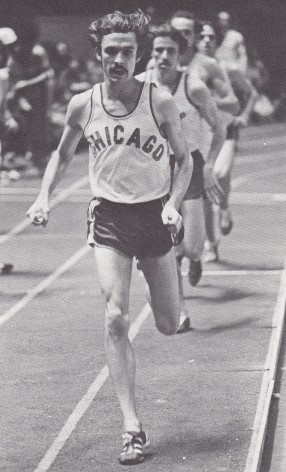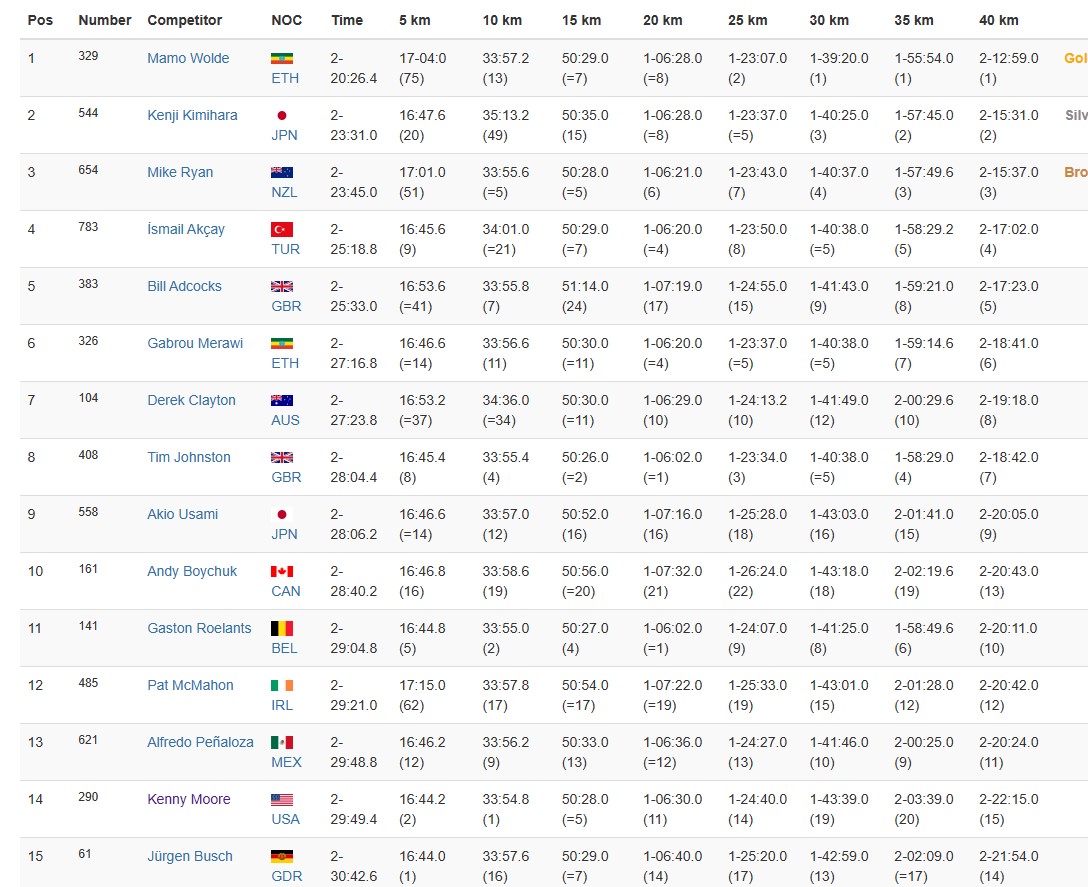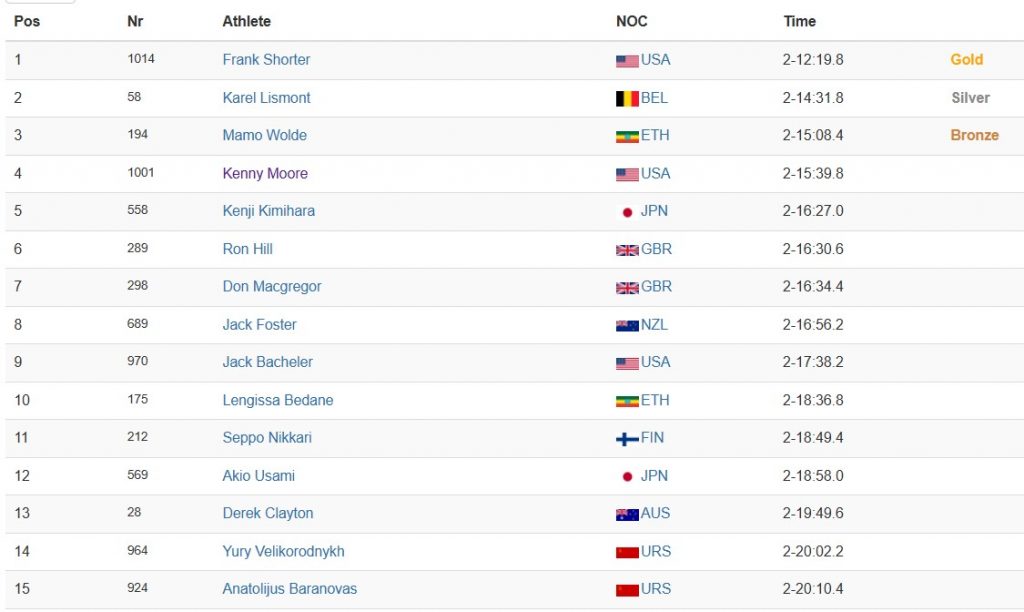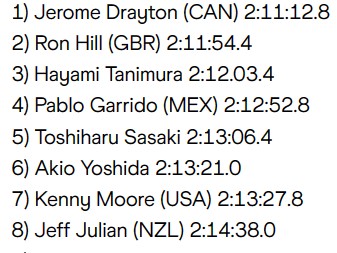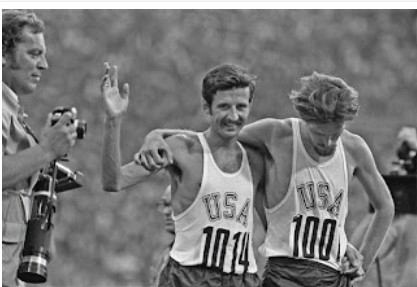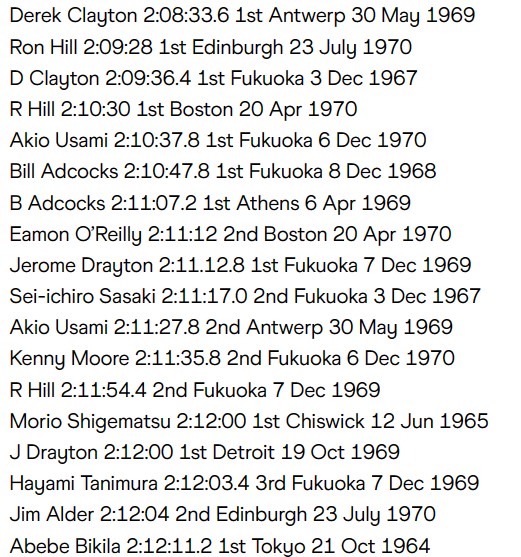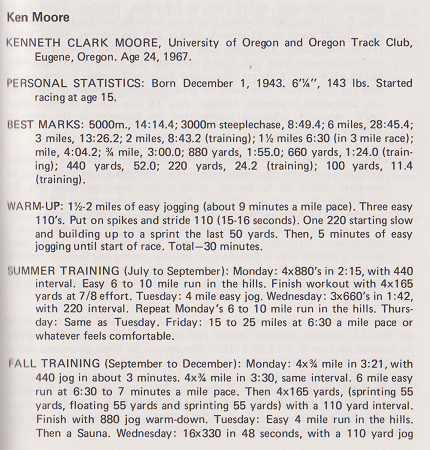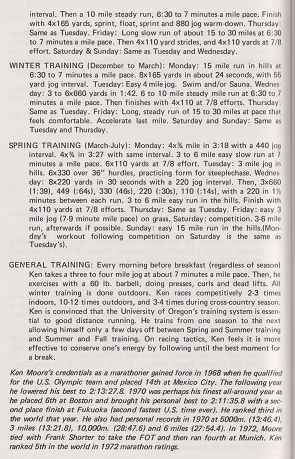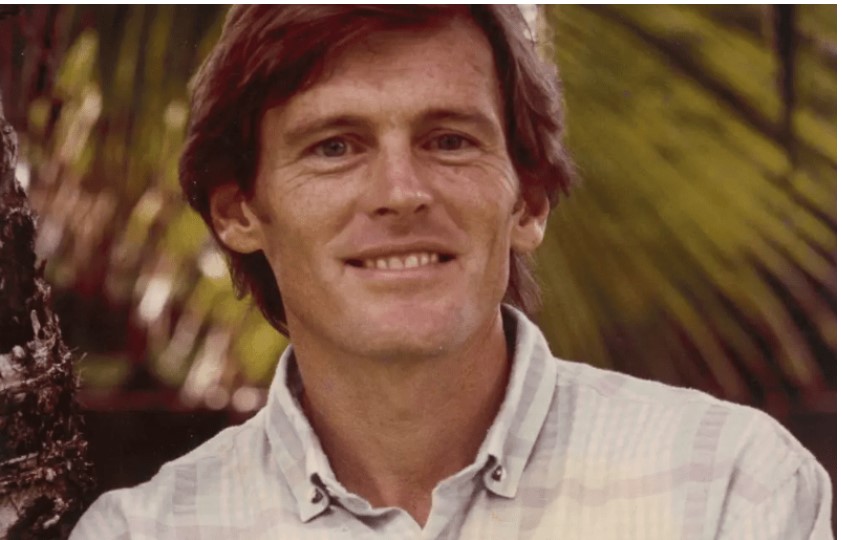Kenny Moore is a highly respected American distance runner. Also a talented and well known writer and journalist who never followed the precedent set by other international marathon runners and wrote about himself. His main influence on others was the example he set by his running and the detail he put into his writing. For a resume of his early career we need look no further than the start of the Wikipedia article.
“Moore was born in Portland, Oregon, on December 1, 1943. He attended North Eugene High School in Eugene, Oregon. He went on to study at the University of Oregon, where he raced for the Oregon Ducks under coach Bill Bowerman. He received All-American honors on three occasions and was pivotal to the Ducks winning the team national championship at the 1964 and 1965 NCAA University Division Outdoor Track and Field Championships.
After graduating from Oregon, Moore won the 1967 USA Cross Country Championships, as well as the USA Marathon Championships four years later. He also won the San Francisco Bay to Breakers – the largest footrace in the world – six times in a row from 1968 to 1973, becoming the all-time leader in victories in the race.
Moore first ran the Olympic marathon at the 1968 Summer Games. He led early in the final, but finished fourteenth after suffering from severe blisters. It was still the best performance among American competitors. He joined the U.S. Army later that year, but was permitted to continue racing. He set the record for best time among American runners at the Fukuoka Marathon in 1969 and 1970, finishing runner-up in the latter race. Upon completing his military service, he returned to the University of Oregon and graduated with a Master of Fine Arts in creative writing in 1972. He again participated in the marathon at the Summer Olympics that year. Although he tripped and fell one mile into the race, he recovered and narrowly failed to win a medal after finishing fourth.”
That’s the outline, but at this point most would be asking how good he was as a runner. We see from above what his competitive record was but how fast was he? He has personal best times
| Distance | Time | Year |
|---|---|---|
| One Mile | 4:04.2 | 1966 |
| 3000m | 8:49.4 | 1966 |
| 5000m | 13:46.4 | 1970 |
| 10000m | 28:47.6 | 1970 |
| Marathon | 2:11:36 | 1970 |
In the Marathon in the Mexico Olympics in 1968 there were 74 starters, 57 finishers and Moore was 14th in 2:29:49.4. The conditions there were notoriously bad for endurance runners and in the marathon several high quality runners failed to finish (eg Jim Alder dropped out at 30 Km), other well known men were well down the field (John Stephen Akwari was 57th, Ireland’s Mick Molloy was 41st, New Zealand’s Dave McKenzie was 37th). His splits are here with the rest of the top 15.
Came the 1972 Games in Munich and the difficulties were man-made rather than because of the altitude and heat. It was the kidnapping of the Israely team and subsequent shoot out at the airport that almost caused the marathon and other events to be cancelled. It went ahead however and Moore ran very well indeed. There were 62 finishers and, although he was fourth he was only second American to finish. First 15 again, but no splits unfortunately.
Just under 15 minutes faster than in Mexico. The performances in the Fukuoka Marathon in Japan were quite spectacular. His first run was on 7th December, 1969. First time round he finished seventh in 2:13:27.8 compared to the winner’s 2:11:12.8. The winner was Jerome Drayton of Canada prompting the writer K Ken Nakamura to point out that for the last four years the first runner in the race was from a British Commonwealth country. The first eight were
Kenny Moore and Frank Shorter
In 1970, on December 6th, he was second in 2:11:35.8, behind Akio Usami (Japan) who ran 2:10:37.8 which was a Japanese National best time. After that race the top 15 best marathon times ever run were as follows.
Having established his credentials as a marathon runner, an international marathon runner, the question on everybody’s lips is: “How did he achieve so much? How did he train to reach these heights in the races that counted? One of the problems at this distance in time is that although he wrote well about the sport and about its participants, he never wrote in any kind of detail about his own training and racing, how they were planned out or what help he had when doing it. We do have the following information from “How They Train” by Fred Wilt (supplied by Colin Youngson). There is a considerable amount of detail here with warm-up, summer, autumn, winter and spring training plus general training. Note that he includes training marks as ‘personal bests’ which is not general practice.
There is bit more insight in the article Kenny Moore Marathon Training – LetsRun.com from which the following is taken. It is preparation for a particular race, the New York Marathon in 1978.
TRAINING: Ken trains at 9AM and 3PM 6 days per week and one long run on the 7th day beginning in late AM. His longest ever run is 43 miles. Preferred racing frequency is once a month and dwindling. Ken’s easy days are 3-5 mile jog in the morning and sometimes and easy three mile jog in the afternoon on Pre’s Trail. The following workouts were done prior to the 1978 New York Marathon.
Mon, September 26th –Easy day.
Tues–Brainstorm Eric Heiden, embellish notes,–run 6 x mile on Pre’s Trail in 4:40-4:44.
Wed–Easy day and garden work.
Thurs–Easy day.
Fri–32-mile run.
Sat–Easy day.
Sun–Easy day.
Mon–6×330 on grass(last 6 45.5-46), easy 6 miles.
Tues–Easy day.
Wed–Easy day.
Thurs–6 x mile @ 4:40.
Fri–Easy day.
Sat–Easy day.
Sun–28-mile run.
Mon–Easy day.
Tues–Easy day.
Wed–3×660(1:42), 440(66), 330(48), 220(32), 110(15), jog 10 miles.
Thurs–Easy day.
Fri–Easy day.
Sat–6 x mile @4:36
Sun–Easy day, fly to Washington D.C.
Mon–15 miles easy.
Tues–Easy day.
Wed–10 mile run, 1st five at 7:00 pace and second five at 5:00 pace.
Thurs–Easy day.
Fri–Easy day.
Sat–Easy day.
Sun–New York City Marathon, 2:16:29. Ken did not run for the next 8 days but on the 27th of October won a pumpkin carving contest at Bob Newland’s house.
Details such as these were avidly consumed by the runners during the 60’s, 70’s and 80’s by athletes and were major influences on how they trained. The latest in “Runner’s World” or “Track and Field Log”, the new book by one of the top runners sold out in the first edition – and often in subsequent editions depending on how good the athlete was or how successful the coach was. Kenny Moore was one of the best runners and one of the best writers.
